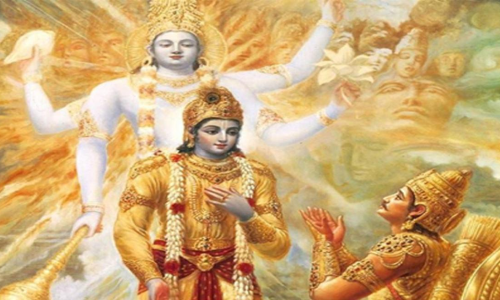Epic contribution of Kavitrayam to literature

Kavitrayam (tree poets) in the Telugu literature -- Nannayya Bhattaraka, Thikkana Somayaji and Yerrapragada -- had translated the ancient Indian epic, Mahabharatha into the Telugu language as Andhra Mahabharatham.
Hyderabad: Kavitrayam (tree poets) in the Telugu literature -- Nannayya Bhattaraka, Thikkana Somayaji and Yerrapragada -- had translated the ancient Indian epic, Mahabharatha into the Telugu language as Andhra Mahabharatham. Besides, these three Telugu poets, several other poets had translated Sage Vyasa’s work in Sanskrit by several others in various Indian languagues making the epic’s message reach many.
That apart, its central themes have become part of the oral traditions of people across the country and continue to survive for centuries to till date.
Each of the three poets had their own style and texture in weaving their poetic proves into poems and made an immense contribution to the Telugu language and literature. Apart from translating Mahabharat into Telugu language they have other writings to their credit.
Nannaya (11 Century AD) was the first to initiate to bring the epic poem into Telugu language. It is of about one lakh couplets or Slokas, in addition to the prose passages. It is considered to be ten times the combined length of the Iliad and Odyssey, the two ancient Greek epic poems written by Homer. It occupies its own right place in the Epic literature of the world, along with the other Indian epic Ramayana.
Nannaya is known as Aadi Kavi or the first poet in the Telugu literature. This was because, he was the first to format the grammar in the language with his contribution of “Andhra Sabha Chintamani”. This was written in Sanskrit.
However, there is a difference of opinion among the scholars about his being called as Aadi Kavi, citing the existence of literature in the language before him. This is best left to the scholars of the history of the Telugu language and literature. However, it cannot be disputed that Nannaya's move remains as the Golden Movement, in the Telugu literature and in the epic literature of the country.
Nannayya during his lifetime could complete only the first third of the Andhra Mahabharatha leaving the story of exile of Pandava’s to the forests remained incomplete. It was from here, after a 100-year gap, Tikanna Somayaji, resumed writing it again in the 12th Century AD, and completed from 4 to 18 chapters, from the return of the Pandava’s from their forest exile and till the end.
Again in the 14th Century AD, Errapagada or Yerranna completed the third chapter left unfinished by Nannayya, making the translation of the Mahabharata into Telugu complete.
Their exercise also completes another task of Telugu language and literature claiming its own place in the epic literature in the country. Another important achievement was that the Epic poetry, in the world of literature, stands on a different footing from other forms of literature by virtue of its very nature.
They are considered as the first concerted efforts made to provide a cosmology or world view, forming the very sense of civilisation to the people of a given society or a country. They include the ‘Principia Ethica’ (Principles of Conduct) of people towards, family, friends, society, state, as well their functional relation to the religious and spiritual dimensions.
However, some of these Epic poems, elsewhere in the world are surviving in the scholarly circles and university libraries. Some others remained in the expressions of the cultural forms like music, dance and the like.
For example, the epics of the Homer and Hesiod formed the basis of the Ancient Greek religion and culture and its civilization. Quite a few others belonging to the ancient civilisations have either completely disappeared or have become irrelevant to catch the imagination of the people in the contemporary societies.
All these are outcomes of the intervening developments like invasions, colonisation and the rise of new epic literature. It was against the similar settings that translation of the Mahabharata had picked up in the regional languages in India.
It was a revival movement in the regional language literature to secure and fortify the sense of civilization shared by people from ancient times and to continue to have a living impact on millions of people across the country.
What caught the imagination of poets across the regional languages to make such efforts was that the epic poem clams, “Yanneshasti Na Tadvacit”, meaning, “what is not here (in the Mahabharatha) is nowhere else (in the world).
Starting a with a simple plot of how the difference between the sons of brothers belonging to a royal family plunges the entire kingdom and its people to suffer with the war of Kurushetra (the just war). Almost at the end of the epic poem, in the middle of the war, Lord Krishna proclaims, “Yada Yada hi Dharmasya glanir bhavati Bharata abhyutthanam adharmasya tadatmanam srjamy aham” (Whenver unrighteousness dominates, O’ descendent of Bharatha, I will appear to establish the righteousness).
Throughout the journey of this poem, it vividly explains different places where the Pandava’s moved around the country. Thus, connecting almost every state in the country is one way or the other related this epic poem. The Kavitrayam, with the Andhra Mahabharatha is once again reinforced and fortified how the Telugu people shared the ancient civilisation along with other people in the country.
By V R C Phaniharan














